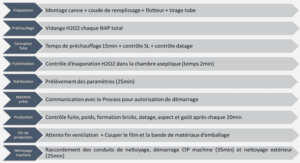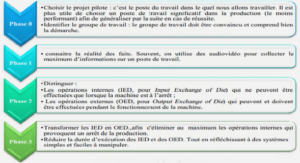The green anodes are baked in the baking furnace with a certain heating rate up to about 1100-1200 °C. During baking, a part of binder pitch volatilizes, and the rest carbonizes forming a link between the dry aggregate particles (petroleum coke, recycled butts, and rejected green and baked anodes) [1, 13]. The volatiles released during baking provide a part of the energy required for anode baking in the furnace. The effects of baking conditions (heating rate, baking temperature, and soaking time) on some of the anode properties (air permeability, air and CO2 reactivities) were studied, and the determination of the kinetic expressions for devolatilization were described [46, 47].
The source of pitch and the pitch content (percentage) have an impact on anode quality. Therefore, the study on the rate of volatile release is important. Also, pitch properties and pitch content leading to good anode quality for a given baking condition need to be determined. To our knowledge, there is no recent study on the measurement of devolatilization kinetics of green anodes with different pitches and different pitch contents. This study provides the kinetic data necessary to quantify the energy available from the volatiles and the rate of volatile release for pitches with different properties and different pitch contents under the same baking conditions.
Anode structure characterization
Some researchers showed that good quality carbon anodes are made from relatively anisotropic coke particles which give better anode strength and relatively isotropic carbonized pitch with low impurity since the mechanical strength of an anode is associated with the presence of disordered texture of carbonized pitch [25, 33]. A controlled degree of disorder and relatively isotropic carbonized pitch seems to give better anode properties.
Carbonized pitch can have two types of structure: anisotropic and isotropic. Structure of carbonized pitch depends on binder pitch composition and how the pitch is pyrolyzed. It was reported that disordered (up to a certain extent) carbonized pitch produces stronger carbonized pitch matrix with more opportunity for chemical bonding with coke particles in addition to physical bonding. Moreover, disordered carbonized pitch has less open porosity which helps protect underlying aggregate materials from air/CO2 oxidation better than ordered carbonized pitch [48, 49].
Coke has a wide variety of microstructures, which can be grouped into anisotropic, isotropic, and amorphous [50]. The structure of coke affects the anode mechanical properties. Anisotropic (e.g., streak coke) coke is softer and can be graphitized easily. However, isotropic or amorphous (e.g., spherulitic coke) coke is relatively more difficult to graphitize or not graphitizable at all , has a high coefficient of thermal expansion, is more susceptible to cracking due to thermal shock, and has a detrimental influence on anode thermo-mechanical properties [30, 31].
Different authors studied the structures of coke and/or pitch using the scanning electron microscopy (SEM) and optical microscopy (OM) techniques. They found that the variations in composition as well as the physical properties of coke and pitch are accompanied by differences in their microstructures . Moreover, during the heating process, pitch undergoes pyrolysis; the thermal decomposition of pitch results in the release of volatiles and the formation of carbonized pitch. Changes in the operational conditions during pitch carbonization (baking) also generate differences in the structure of the resultant carbon material [52].
The structure of carbonized pitch and the interface between coke and pitch formed in the anode manufactured have a significant influence on the anode properties. It is known that pitch quantity and its distribution in an anode are two of the key factors which control the anode properties such as density, electrical resistivity, permeability, and CO2/air reactivities [53, 54].
A number of studies have been reported in the literature on the characterization of carbonized pitch, cokes, and carbon surfaces using optical microscopy (OM) and SEM . The proportions of the various textural components were determined by applying a point-counting technique using the SEM images of the etched surfaces, and the mechanical properties of the carbon anodes were correlated with the textural composition of binder pitch [34, 51]. Hays et al. [51] fabricated baked laboratory carbon anodes using fine petroleum coke (+75-150 µm) as aggregate and four coal tar pitches with different types of QI as binder. However, they did not study the commercial carbon anodes which contain approximately 65 % petroleum coke, 20 % recycled anode and butt particles with a wide range of size distribution. One of the objectives of the current work was to compare the differences in the texture and topography of carbonized pitch as well as the interface between pitch and particles in anodes which were produced in the laboratory using an anode recipe similar to that of industry. Moreover, a further attempt was made to relate the nature of the carbonized pitch with the characteristics of the pitch and especially its QI content.
Due to the similar hardness and compositions of coke and carbonized pitch present in baked anodes, it is difficult to identify them and their interface after polishing the surface of a baked anode sample. It was reported that the structure within the texture can be studied by creating a topography using various etchants (e.g. etching the surfaces with atomic oxygen and chromic acid), as the preferential reaction with carbon materials is different depending on different etchants [55]. The etchant preferentially attacks the carbonized pitch without significantly affecting the coke. This way, carbonized pitch could be distinguished from the other carbon particles (coke, butt, etc.). The carbonized pitch has three textural components: lamellar, intermediate, and granular . The textural composition of the carbonized pitch is dependent on the character of the pitch and the type of QI components present [16, 51]. It was reported that primary QI and carbon black reduce lamellar and intermediate textures. Granular structure can be associated with primary QI and carbon black. However, if the granular structure is coarse, it is more related to primary QI. A small amount of primary QI produces intermediate texture. Chromic acid is toxic and carcinogenic. For this reason, chromic acid oxidation is not preferable for use in the laboratory and in the plant. A new method for etching the anodes was developed during this research work and is explained in the methodology section.
CHAPTER 1 INTRODUCTION |






